India Just Beat Japan! Now the World's 4th Largest Economy-Here's What That Means
Ankit Gupta | May 25, 2025, 12:28 IST
India’s ascension to the fourth-largest economy is both a moment of national pride and a call to action. While the milestone signals global recognition, the real work lies in ensuring that the benefits of growth reach all citizens.
In a historic leap that marks a new chapter in the global economic narrative, India has overtaken Japan to become the world’s fourth-largest economy in terms of nominal GDP. With a value of approximately $4 trillion, this achievement isn’t just a numerical victory—it signals a transformative shift in global power equations, economic strategies, and the aspirations of 1.4 billion people. More than symbolic, India’s rapid rise reflects its deep resilience, structural reforms, and the ability to navigate a volatile global environment better than many expected.
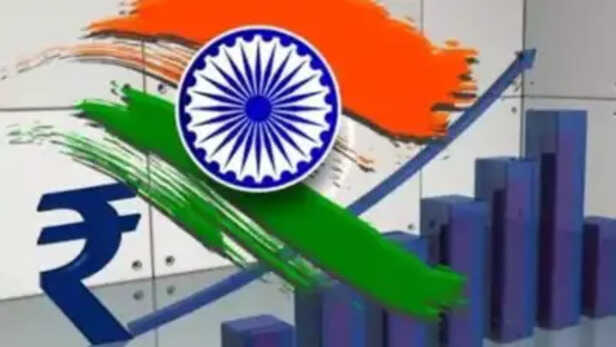
India's overtaking of Japan in nominal GDP terms, according to the latest International Monetary Fund (IMF) and World Bank data, is a moment of profound economic symbolism. As of 2024, India's GDP stands at approximately $4 trillion, while Japan’s GDP, affected by slow growth and a depreciating yen, has marginally slipped below this mark. This reshuffling in global rankings places India behind only the United States, China, and Germany—solidifying its place among the world’s most consequential economies.
But what makes this ascent extraordinary is the velocity and consistency of India’s economic expansion. Over the past decade, India has averaged 6–7% annual growth, far outpacing most advanced economies. Post-COVID recovery further accelerated the momentum, with strong performances in sectors like manufacturing, services, digital economy, and infrastructure. While Japan grapples with demographic stagnation, deflationary pressures, and fiscal constraints, India benefits from a young population, rising consumption, and aggressive policy measures fostering investment and innovation.
This milestone is also a testament to the maturity of India's macroeconomic fundamentals. Despite global headwinds like supply chain disruptions, inflationary pressures, and geopolitical tensions, India has managed to maintain fiscal discipline, attract record-high foreign direct investment, and expand its digital and startup ecosystem. Its ability to simultaneously focus on grassroots development and global competitiveness has been a defining feature of this transition.
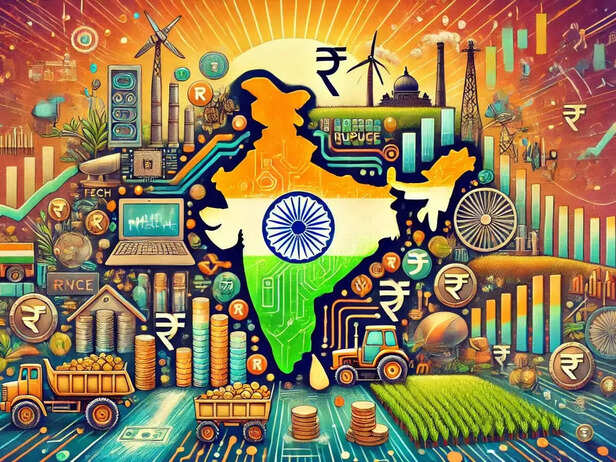
India’s economic success is not an accident. It is the result of a distinctive model that combines democratic governance, a large consumer base, technological adoption, and strategic policymaking. Unlike the export-driven models of East Asia or the state-capitalism of China, India’s growth has been consumption-driven, with strong contributions from services, IT, and increasingly, manufacturing.
Government-led initiatives like “Make in India,” “Digital India,” “Startup India,” and Production-Linked Incentive (PLI) schemes have helped create an ecosystem that supports entrepreneurship, innovation, and job creation. The Unified Payments Interface (UPI) revolutionized digital transactions, making India the world’s fastest adopter of digital payments. Its startup ecosystem is now the third largest in the world, producing more than 100 unicorns.
A significant part of India’s growth trajectory is driven by its demographic dividend. With over 65% of its population under the age of 35, India has the world’s largest working-age population. This has not only boosted domestic consumption but also made India a hub for global talent, especially in IT and knowledge sectors. Indian professionals dominate Silicon Valley, global consulting, and even top leadership in multinationals—feeding both remittances and reputation.
At the same time, India’s policies have increasingly focused on long-term resilience—investing in infrastructure, energy transition, and education reforms. Programs like PM Gati Shakti aim to streamline logistics and infrastructure bottlenecks, while massive highway and railway modernizations are underway. The government’s emphasis on green energy, hydrogen, and solar initiatives positions India as a future leader in sustainable development.
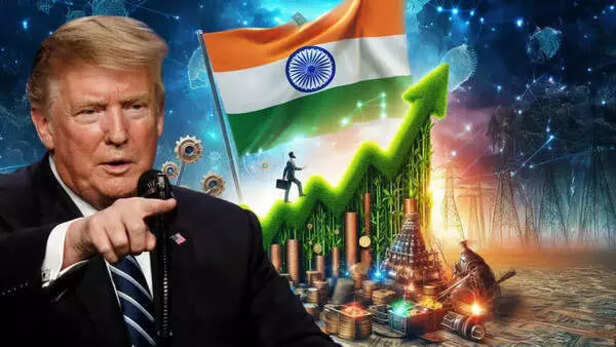
As India climbs the economic ladder, its geopolitical profile is undergoing a significant transformation. Economic heft directly translates to greater influence in global decision-making forums such as the G20, BRICS, and World Trade Organization (WTO). In 2023, India hosted the G20 summit with remarkable success, pushing forward discussions on climate finance, digital infrastructure, and development agendas—positioning itself as a voice for the Global South.
India’s unique diplomatic stance—non-aligned but assertive—has helped it maintain relationships across divergent global blocs. While it maintains strategic partnerships with the United States and the West, it also engages with Russia, Iran, and China, often playing the role of a balancing power. Its stand on issues like vaccine equity, WTO reform, and climate negotiations shows its ambition to lead not only economically but morally and diplomatically.
The Indo-Pacific strategy, the QUAD alliance, and defense collaborations with countries like France, Israel, and the US reflect India’s aspirations to be a regional security anchor. Simultaneously, India is also investing in soft power—through Yoga diplomacy, the global spread of Indian cinema, and cultural exports that resonate globally.
As India’s economy grows, so does its ability to influence global markets—from energy and commodities to technology standards and climate talks. It’s no longer just a market; it’s becoming a market maker.
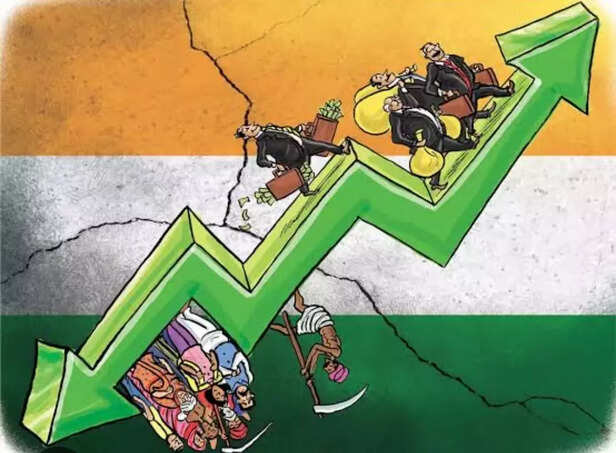
Despite this monumental rise, India faces formidable internal challenges that must be addressed to sustain and distribute its growth. Chief among these is the issue of inequality. While GDP numbers reflect national prosperity, income disparity remains stark. Millions still live in poverty, and access to quality education, healthcare, and social mobility continues to be uneven, especially in rural and marginalized regions.
Unemployment and underemployment are pressing concerns, particularly for the youth. While India’s services sector has flourished, the manufacturing sector still struggles to absorb the vast labor force. The informal economy remains dominant, and skilling programs, though ambitious, haven’t yet achieved the scale and quality required to meet industry demands.
Another issue is urban infrastructure. As Tier-2 and Tier-3 cities expand rapidly, the pressure on roads, water supply, housing, and sanitation grows. Without sustainable urban planning, the risk of chaotic urbanization could derail quality-of-life metrics, even as the economy grows on paper.
Environmental concerns also loom large. India’s energy needs are growing, and while progress in solar and green hydrogen is promising, coal remains a significant part of the mix. Balancing growth with environmental sustainability will be critical, especially in light of rising pollution, water stress, and climate vulnerabilities.
Lastly, bureaucratic red tape, legal delays, and policy unpredictability remain systemic bottlenecks. While reforms have been substantial, much remains to be done in judicial reform, land acquisition policies, and ease of doing business for MSMEs. India’s ability to convert economic potential into inclusive prosperity depends on overcoming these structural hurdles.
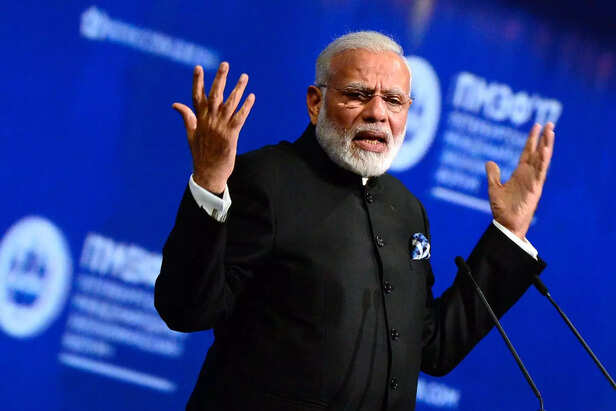
Having reached the fourth position, India’s next major milestone is surpassing Germany to become the third-largest economy, which many economists believe is possible within the next 3 to 4 years. Achieving this would mean surpassing a GDP of $5 trillion and beyond, positioning India not just as an emerging market, but as a central pillar of the global economy.
To realize this vision, India needs to double down on infrastructure development, agricultural modernization, education reform, and climate resilience. The focus must shift from “growth at all costs” to quality, inclusive, and sustainable growth. Programs like the National Education Policy (NEP) and Digital Public Infrastructure (DPI) are promising starts but need consistent execution and cross-party support.
India also has the potential to lead in sectors like semiconductors, AI, clean energy, and pharmaceuticals. If it capitalizes on its demographic dividend with meaningful skilling, employment generation, and innovation support, it could become a hub for global supply chains—particularly as companies seek alternatives to China in a post-pandemic world.
Another key frontier is financial deepening—improving access to credit, strengthening public sector banks, deepening capital markets, and integrating rural economies with formal finance. The rise of fintech, digital lending, and UPI-based innovations can play a transformative role in democratizing wealth creation.
Politically, India must uphold its democratic institutions, pluralistic ethos, and rule of law, ensuring that economic growth does not come at the cost of civil liberties or institutional integrity. The foundation of long-term prosperity is not just GDP—it is trust, transparency, and accountability.
If India can navigate this complex journey, it won’t just be a large economy—it will be a great civilization in the modern world, balancing material prosperity with spiritual depth, democratic vigor with global vision.
India’s emergence as the world’s fourth-largest economy is more than a headline—it is the culmination of centuries of resilience, decades of reform, and the dreams of billions. It symbolizes not just economic progress, but a civilizational resurgence—a return of India as a key shaper of world affairs.
The road ahead is filled with challenges—social, economic, environmental—but also brimming with unprecedented opportunity. If steered wisely, India can evolve from a rising power to a guiding force, offering the world not just cheap labor or a large market, but a new model of inclusive, democratic, and spiritual capitalism.
As the world watches, the Indian story is no longer about catching up. It’s about leading, shaping, and inspiring. The fourth-largest economy today, a potential third tomorrow, and perhaps, in the years to come—not just economically strong, but a moral and intellectual superpower rooted in its ancient soul and modern mind.
Numbers That Speak Volumes

The Economic Milestone
( Image credit : Times Life Bureau )
India's overtaking of Japan in nominal GDP terms, according to the latest International Monetary Fund (IMF) and World Bank data, is a moment of profound economic symbolism. As of 2024, India's GDP stands at approximately $4 trillion, while Japan’s GDP, affected by slow growth and a depreciating yen, has marginally slipped below this mark. This reshuffling in global rankings places India behind only the United States, China, and Germany—solidifying its place among the world’s most consequential economies.
But what makes this ascent extraordinary is the velocity and consistency of India’s economic expansion. Over the past decade, India has averaged 6–7% annual growth, far outpacing most advanced economies. Post-COVID recovery further accelerated the momentum, with strong performances in sectors like manufacturing, services, digital economy, and infrastructure. While Japan grapples with demographic stagnation, deflationary pressures, and fiscal constraints, India benefits from a young population, rising consumption, and aggressive policy measures fostering investment and innovation.
This milestone is also a testament to the maturity of India's macroeconomic fundamentals. Despite global headwinds like supply chain disruptions, inflationary pressures, and geopolitical tensions, India has managed to maintain fiscal discipline, attract record-high foreign direct investment, and expand its digital and startup ecosystem. Its ability to simultaneously focus on grassroots development and global competitiveness has been a defining feature of this transition.
India’s Unique Growth Model

People, Policy, and Potential
India’s economic success is not an accident. It is the result of a distinctive model that combines democratic governance, a large consumer base, technological adoption, and strategic policymaking. Unlike the export-driven models of East Asia or the state-capitalism of China, India’s growth has been consumption-driven, with strong contributions from services, IT, and increasingly, manufacturing.
Government-led initiatives like “Make in India,” “Digital India,” “Startup India,” and Production-Linked Incentive (PLI) schemes have helped create an ecosystem that supports entrepreneurship, innovation, and job creation. The Unified Payments Interface (UPI) revolutionized digital transactions, making India the world’s fastest adopter of digital payments. Its startup ecosystem is now the third largest in the world, producing more than 100 unicorns.
A significant part of India’s growth trajectory is driven by its demographic dividend. With over 65% of its population under the age of 35, India has the world’s largest working-age population. This has not only boosted domestic consumption but also made India a hub for global talent, especially in IT and knowledge sectors. Indian professionals dominate Silicon Valley, global consulting, and even top leadership in multinationals—feeding both remittances and reputation.
At the same time, India’s policies have increasingly focused on long-term resilience—investing in infrastructure, energy transition, and education reforms. Programs like PM Gati Shakti aim to streamline logistics and infrastructure bottlenecks, while massive highway and railway modernizations are underway. The government’s emphasis on green energy, hydrogen, and solar initiatives positions India as a future leader in sustainable development.
Geopolitical Rebalancing

India's Rising Global Influence
As India climbs the economic ladder, its geopolitical profile is undergoing a significant transformation. Economic heft directly translates to greater influence in global decision-making forums such as the G20, BRICS, and World Trade Organization (WTO). In 2023, India hosted the G20 summit with remarkable success, pushing forward discussions on climate finance, digital infrastructure, and development agendas—positioning itself as a voice for the Global South.
India’s unique diplomatic stance—non-aligned but assertive—has helped it maintain relationships across divergent global blocs. While it maintains strategic partnerships with the United States and the West, it also engages with Russia, Iran, and China, often playing the role of a balancing power. Its stand on issues like vaccine equity, WTO reform, and climate negotiations shows its ambition to lead not only economically but morally and diplomatically.
The Indo-Pacific strategy, the QUAD alliance, and defense collaborations with countries like France, Israel, and the US reflect India’s aspirations to be a regional security anchor. Simultaneously, India is also investing in soft power—through Yoga diplomacy, the global spread of Indian cinema, and cultural exports that resonate globally.
As India’s economy grows, so does its ability to influence global markets—from energy and commodities to technology standards and climate talks. It’s no longer just a market; it’s becoming a market maker.
Domestic Challenges on the Road Ahead

Income Inequality Widens
Despite this monumental rise, India faces formidable internal challenges that must be addressed to sustain and distribute its growth. Chief among these is the issue of inequality. While GDP numbers reflect national prosperity, income disparity remains stark. Millions still live in poverty, and access to quality education, healthcare, and social mobility continues to be uneven, especially in rural and marginalized regions.
Unemployment and underemployment are pressing concerns, particularly for the youth. While India’s services sector has flourished, the manufacturing sector still struggles to absorb the vast labor force. The informal economy remains dominant, and skilling programs, though ambitious, haven’t yet achieved the scale and quality required to meet industry demands.
Another issue is urban infrastructure. As Tier-2 and Tier-3 cities expand rapidly, the pressure on roads, water supply, housing, and sanitation grows. Without sustainable urban planning, the risk of chaotic urbanization could derail quality-of-life metrics, even as the economy grows on paper.
Environmental concerns also loom large. India’s energy needs are growing, and while progress in solar and green hydrogen is promising, coal remains a significant part of the mix. Balancing growth with environmental sustainability will be critical, especially in light of rising pollution, water stress, and climate vulnerabilities.
Lastly, bureaucratic red tape, legal delays, and policy unpredictability remain systemic bottlenecks. While reforms have been substantial, much remains to be done in judicial reform, land acquisition policies, and ease of doing business for MSMEs. India’s ability to convert economic potential into inclusive prosperity depends on overcoming these structural hurdles.
Vision 2030

From Aspiration to Global Leadership
Having reached the fourth position, India’s next major milestone is surpassing Germany to become the third-largest economy, which many economists believe is possible within the next 3 to 4 years. Achieving this would mean surpassing a GDP of $5 trillion and beyond, positioning India not just as an emerging market, but as a central pillar of the global economy.
To realize this vision, India needs to double down on infrastructure development, agricultural modernization, education reform, and climate resilience. The focus must shift from “growth at all costs” to quality, inclusive, and sustainable growth. Programs like the National Education Policy (NEP) and Digital Public Infrastructure (DPI) are promising starts but need consistent execution and cross-party support.
India also has the potential to lead in sectors like semiconductors, AI, clean energy, and pharmaceuticals. If it capitalizes on its demographic dividend with meaningful skilling, employment generation, and innovation support, it could become a hub for global supply chains—particularly as companies seek alternatives to China in a post-pandemic world.
Another key frontier is financial deepening—improving access to credit, strengthening public sector banks, deepening capital markets, and integrating rural economies with formal finance. The rise of fintech, digital lending, and UPI-based innovations can play a transformative role in democratizing wealth creation.
Politically, India must uphold its democratic institutions, pluralistic ethos, and rule of law, ensuring that economic growth does not come at the cost of civil liberties or institutional integrity. The foundation of long-term prosperity is not just GDP—it is trust, transparency, and accountability.
If India can navigate this complex journey, it won’t just be a large economy—it will be a great civilization in the modern world, balancing material prosperity with spiritual depth, democratic vigor with global vision.
More Than a Statistic, A Statement of Destiny
The road ahead is filled with challenges—social, economic, environmental—but also brimming with unprecedented opportunity. If steered wisely, India can evolve from a rising power to a guiding force, offering the world not just cheap labor or a large market, but a new model of inclusive, democratic, and spiritual capitalism.
As the world watches, the Indian story is no longer about catching up. It’s about leading, shaping, and inspiring. The fourth-largest economy today, a potential third tomorrow, and perhaps, in the years to come—not just economically strong, but a moral and intellectual superpower rooted in its ancient soul and modern mind.
